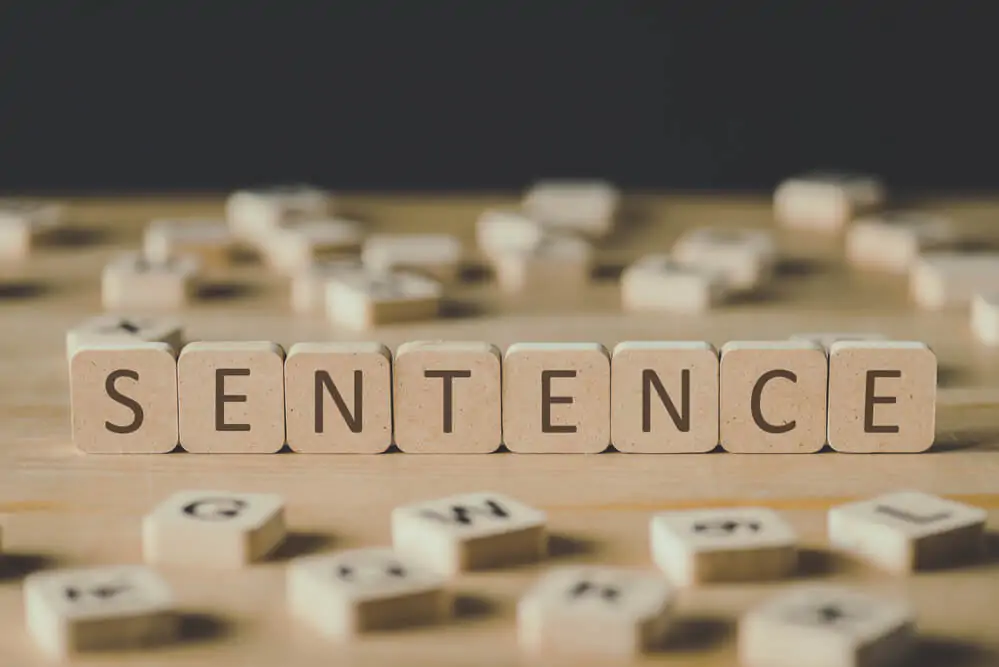You need to understand the difference between title case and sentence case. What is sentence case? Learn more below!
Growing up, you probably spent a lot of time focusing on English grammar rules in school. You probably learned about sentence case and title case. So, what is sentence case? When do you use title case, and when do you use sentence case?
Sentence case refers to a list of rules that you use in the body of your writing. Title case should be used in the title, heading, subtitle, and subheading of your work. When following sentence case capitalization, you use uppercase letters for the first letter of the word and proper nouns. You use lowercase letters for the rest of your work.
Even though it can be difficult to learn these capitalization rules, you can get them down with a bit of practice. What should you know about sentence case? Learn more below!
We tested dozens of grammar checkers, and Grammarly is the best tool on the market today. It'll help you write and edit your work much faster. Grammarly provides a powerful AI writing assistant and plagiarism checker.
Contents
Different Style Guide Options, Same Rules

You may have heard about different style guide and reference list options; however, the rules are generally the same. Numerous major organizations, including the American Psychological Association, the Associated Press, and even the New York Times have released a publication manual.
No matter what capitalization style you follow, whether this is APA Style, AP Style, or MLA Style, the rules will be similar. You should use title case capitalization for titles, headings, subtitles, and subheadings. You should use sentence case capitalization for everything else.
Comparing Sentence Case and Title Case

It may be helpful to compare the rules of sentence case and title case. In sentence case, the vast majority of major words and minor words are lowercase. Major words include adjectives, adverbs, pronouns, nouns, verbs, and proper nouns. Minor words include short prepositions, subordinating conjunctions, coordinating conjunctions, and articles.
You should use capital letters for:
- The first word after end punctuation such as periods, exclamation marks, and question marks
- Proper nouns, including the names of ethnic groups
- The first letter of the first word of titles, headings, subheadings, and subtitles
You should use lower case letters for everything else.
If you are following title case, the rules change it slightly. You should capitalize:
- The first letter of all major words
- All words that are longer than three letters, even if they are minor words
- The first letter following end punctuation
- Both words, if they are part of a hyphenated compound
- The first letter of the first word following a colon or em dash
If you can remember these short rules, you should be able to master the difference between sentence case and title case. In general, you should use title case for titles, headings, subheadings, and subtitles. If you are writing online, you should use title case for H1 and H2, but sentence case for H3 and below.
Examples of Sentence Case and Title Case
It may be helpful to look at a few examples of sentence case and title case. Here is an example of sentence case:
- Yesterday, John ran down the hill with Mary.
You can see that the first letter of the sentence and both proper nouns, which are names, are capiatlized.
Here is an example of title case:
- The Cask of Amontillado
Here, the first word of the title is capitalized, as are all words longer than three letters. Of is a preposition and it is shorter than four letters, so it is not capitalized.
Final Word on What Is Sentence Case
There are multiple capitalization styles to remember, and sentence case is one of the most common. You should use sentence case in the body of your work. In general, you should capitalize all proper nouns and the first word of the sentence. Most other words need to be left lowercase.
If you are having a difficult time remembering when to use sentence case, there are automation tools that may help you. For example, you can take advantage of the grammar tools from Microsoft to help you check your work, making sure you are using sentence case appropriately. If you demonstrate a mastery of sentence case, you can present professional, finished writing products for your audience.
Need help with fixing capitalization issues in your work? A good grammar checker saves hours of time. It’ll help you find and fix odd capitalization issues fast. You can also set rules about capitalizations and house style.
To find out more, read our Grammarly review
FAQs About What Is Sentence Case
When do I need to use sentence case, and when do I need to use title case?
You should use title case for title, subtitles, headings, and subheadings. You should use sentence case everywhere else.
What words do I need to capitalize if I am following sentence case?
You should capitalize the first letter of all proper nouns. You should also capitalize the first letter of the first word in a sentence. Everything else should be left lowercase.
